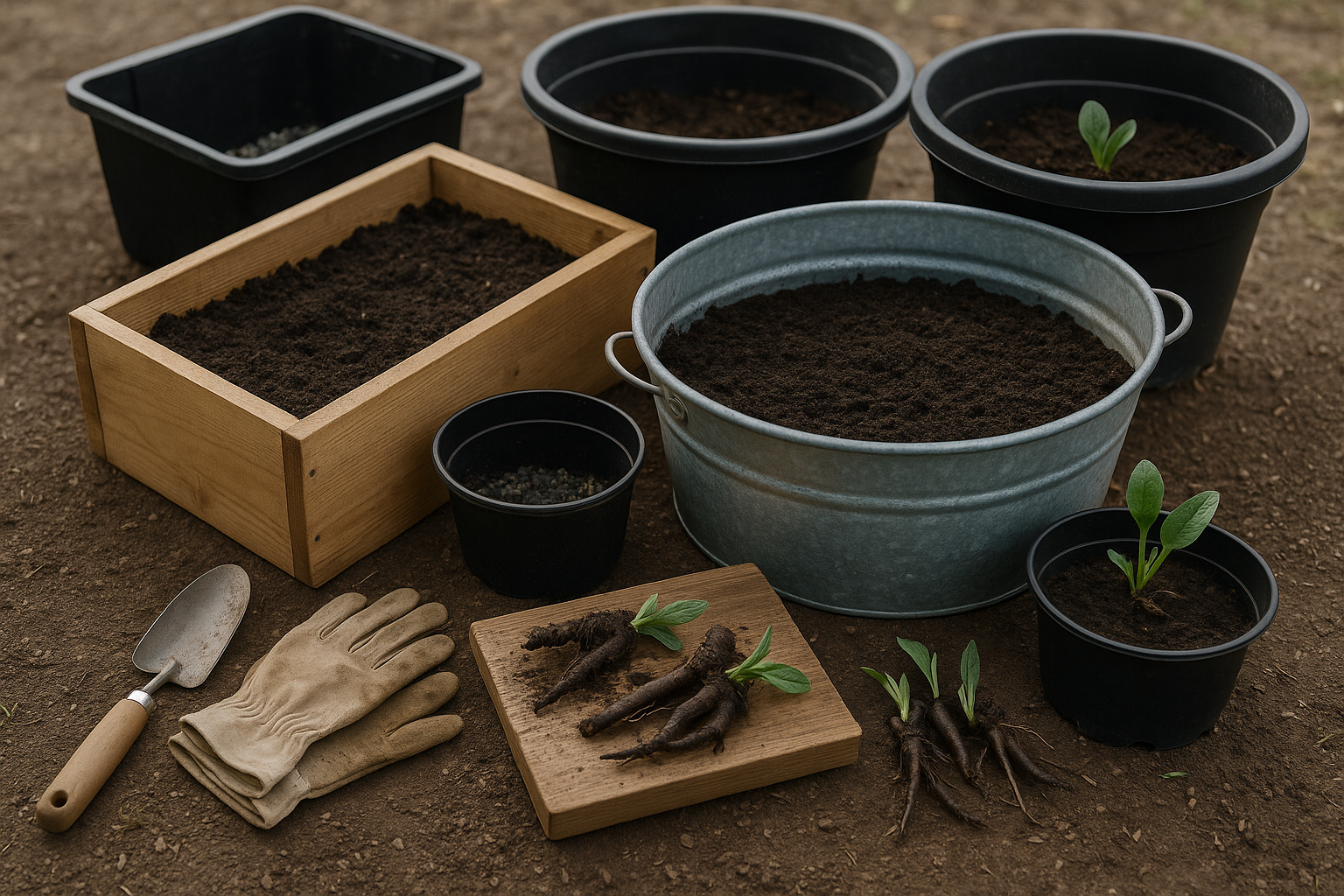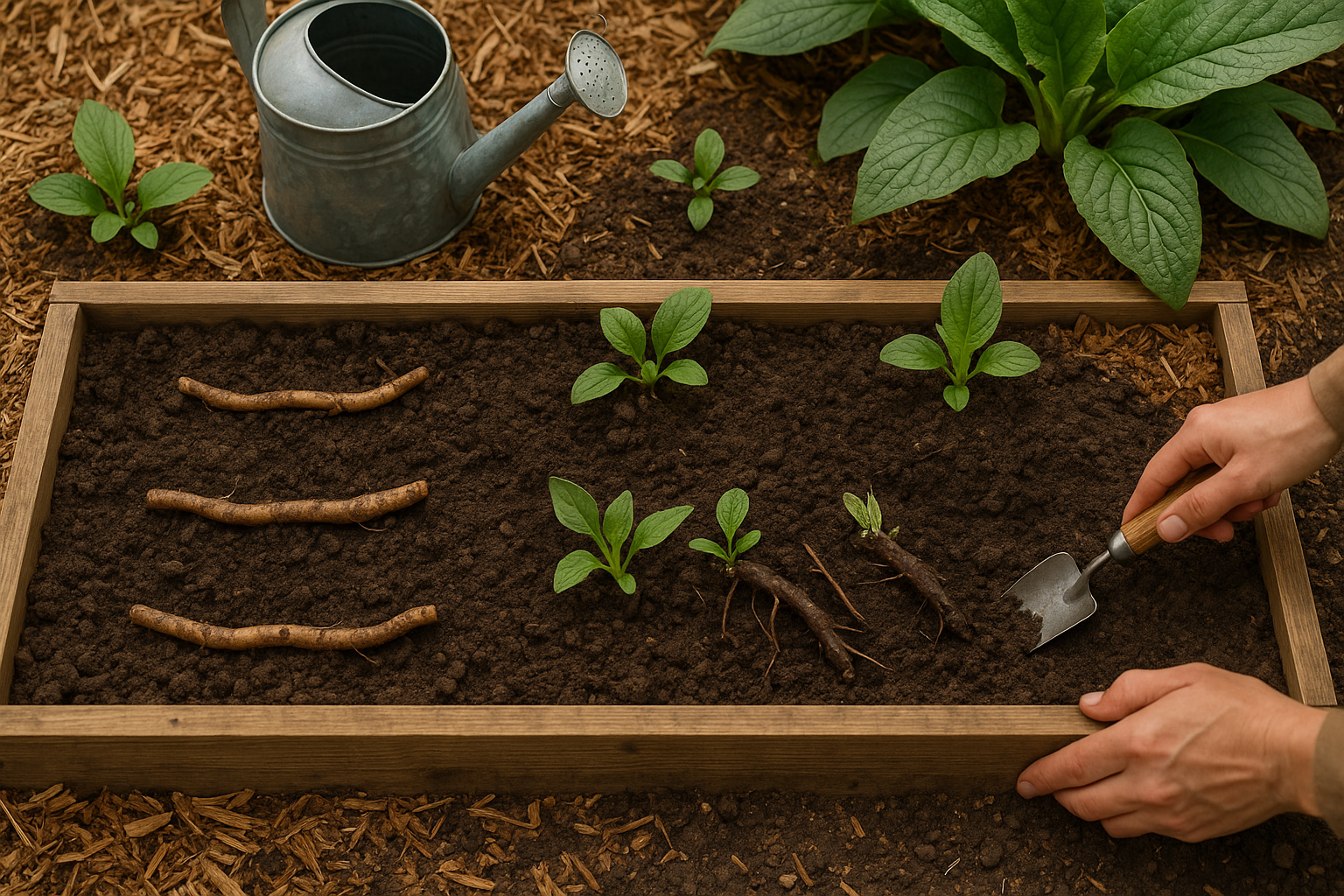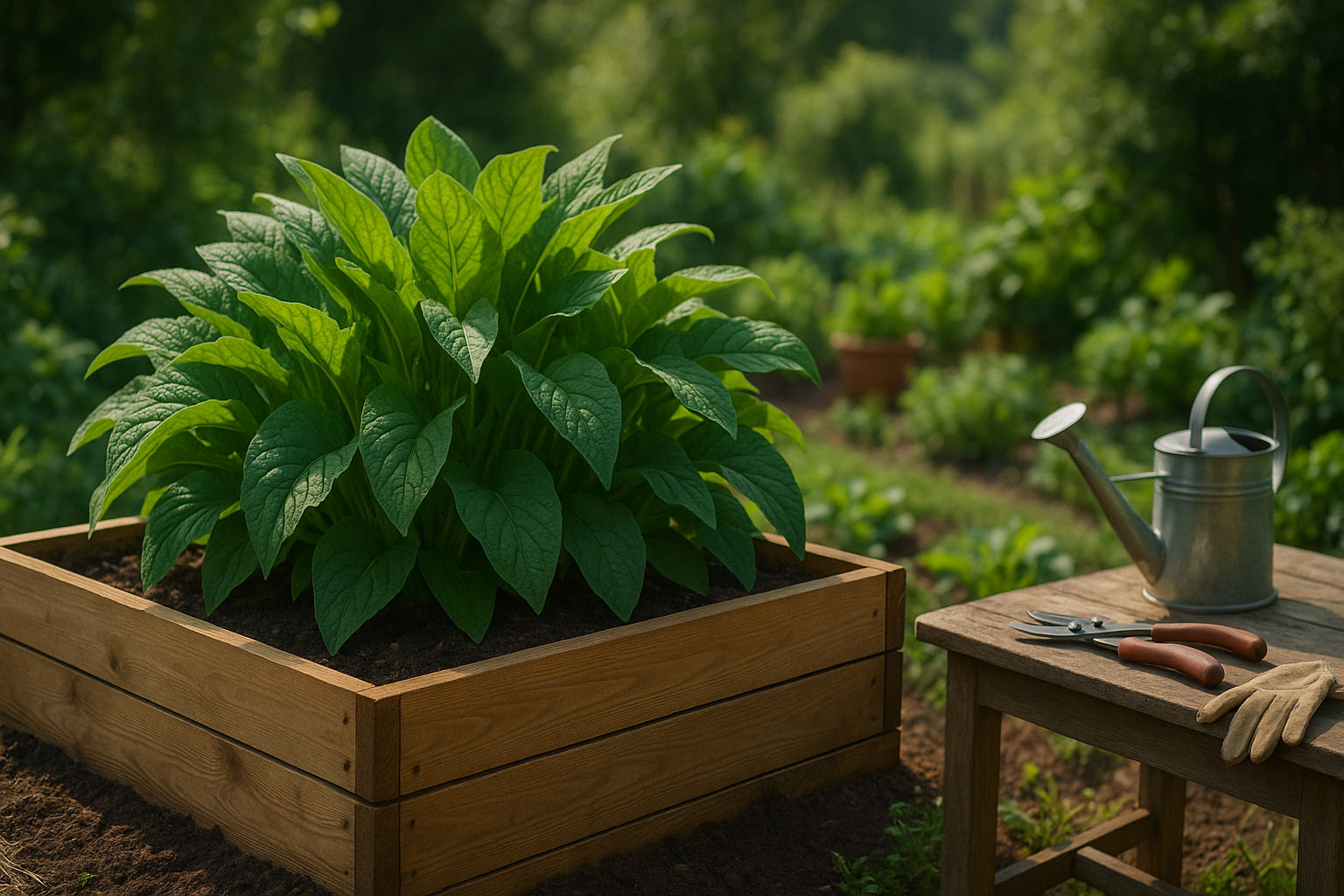Introduction
Comfrey containment is an essential practice for gardeners who want to enjoy this powerhouse plant without letting it take over their space. Comfrey is prized for its rich nutrients, making it a fantastic addition to compost and a natural fertilizer for thriving gardens. However, this fast-growing perennial can quickly get out of hand, spreading through vigorous roots and crowding out other plants if left unchecked.
That’s why learning to keep comfrey under control is crucial—especially in smaller gardens or urban spaces where every inch counts. In this post, we’ll explore simple yet effective strategies for comfrey containment, focusing on how to successfully grow it in raised beds and pots. Whether you’re a beginner or an experienced gardener, you’ll find practical tips and real-world examples to keep comfrey working for you, without any surprises in the rest of your garden.
Why Contain Comfrey? The Risks of Unchecked Growth
Comfrey is prized for its lush foliage and vibrant flowers, but its vigorous growth can quickly turn it into a garden nuisance if not managed properly. This hardy perennial is notorious for its tenacious root system, sending out deep taproots and spreading rapidly through underground rhizomes. Even a small root fragment left in the soil can sprout into a new plant, making comfrey difficult to eradicate once established.
In small or ornamental gardens, comfrey’s relentless expansion can crowd out delicate plants, monopolize nutrients and water, and create dense, unruly stands that disrupt your garden’s design. Unchecked comfrey can also escape garden boundaries and invade neighboring yards or natural spaces, where it may outcompete native vegetation.
These invasive tendencies are why gardeners are strongly advised to plant comfrey in contained areas, such as raised beds or large pots, or to install strong root barriers if placing it in the ground. Regular pruning of foliage and prompt removal of unwanted shoots will also help keep growth in check.
If you love comfrey’s benefits—like dynamic nutrient accumulation or pollinator-friendly blooms—take the extra step to contain it. A little planning up front ensures that comfrey is a helpful companion, not a garden headache.
Choosing the Right Raised Bed or Pot for Comfrey

When selecting a raised bed or pot for comfrey, size and depth are key to ensuring healthy growth. Comfrey plants develop long taproots, so choose containers that are at least 18–24 inches deep to give the roots plenty of room to stretch. Wide containers—at least 18 inches across—are ideal for planting a single comfrey crown.
Sturdy materials such as food-grade plastic, untreated wood, or galvanized metal work best, since comfrey grows vigorously and can quickly outgrow or damage flimsier pots. Avoid terracotta pots, as they tend to dry out too quickly.
Drainage and Soil
Drainage is just as important: select pots with multiple drainage holes or add gravel to the bottom of raised beds if necessary. Comfrey thrives in rich, moist but well-draining soil, so fill your container with a blend of high-quality garden compost and loam, and amend it with well-rotted manure for the best results.
Placement and Care
Place your pot or raised bed in a spot that receives at least six hours of sunlight daily—such as a patio or the edge of a vegetable patch. If you’re growing comfrey for mulch or compost, it’s handy to position it near your compost bin.
Water your container regularly, particularly during summer, since pots tend to dry out faster than ground soil. With the right-sized container, good drainage, and nutrient-rich soil, your comfrey will thrive and reward you with lush, vigorous growth—even if you have limited garden space.
How to Plant Comfrey in Raised Beds or Pots

Planting comfrey in raised beds or pots is simple if you follow a few easy steps. Start by choosing a deep container or raised bed, as comfrey develops long roots and thrives best when it has room to grow downward; aim for at least 18 inches of depth.
Fill your space with a high-quality, well-draining soil mix—add plenty of compost or well-rotted manure, since comfrey is a nutrient-loving plant.
For planting from root cuttings, lay each piece horizontally about 2-3 inches below the surface. If using crowns (young comfrey plants), dig a hole just deep enough to cover the roots.
Space multiple plants 2 feet apart in larger raised beds, or stick to one plant per medium or large pot. Water thoroughly after planting to settle the soil and encourage root establishment.
Right after planting, spread a 2- to 3-inch layer of organic mulch—such as straw, shredded leaves, or untreated grass clippings—around the base to help retain moisture and suppress weeds.
In the first few weeks, keep the soil consistently moist but not soggy, as young comfrey needs steady moisture to develop strong roots. Watch for signs of wilting or dryness, especially in pots that can dry out faster.
Once established, comfrey becomes drought-tolerant and can handle minimal care, but regular watering during dry spells will help it thrive.
With these simple steps, your contained comfrey patch will be off to a strong start, ready to provide nutrient-rich leaves for compost, mulch, or herbal remedies for years to come.
Maintaining and Pruning Comfrey in Containers
To keep comfrey thriving in containers, pay attention to its basic needs and growth habits. Water your comfrey consistently, aiming to keep the soil slightly damp but not soggy—about once or twice a week, depending on the weather. Because container soil dries out faster, check with your finger an inch deep; if it feels dry, it’s time to water.
Comfrey is a heavy feeder, so apply a balanced liquid fertilizer every three to four weeks during the growing season. Place your container in a sunny spot—comfrey grows best with at least six hours of direct sunlight daily, though it can tolerate partial shade.
Since comfrey can quickly become lush and sprawling, prune it regularly by snipping back stems to about six inches above the soil once they reach a foot tall or begin to flower. This keeps the plant tidy and encourages healthier leaf growth. Use sharp shears and remove any damaged or yellowing leaves as you go.
Mulching with compost or straw can help conserve soil moisture and suppress weeds. Keep an eye out for roots pushing through drainage holes or appearing at soil level, as comfrey’s vigorous root system can escape containers if left unchecked.
Lift and divide the plant every couple of years to prevent overcrowding and refresh the soil. Simply trim back excess roots and replant healthy divisions in rejuvenated compost. Regular care ensures your potted comfrey stays manageable, healthy, and productive.
Harvesting and Using Comfrey Safely
When harvesting comfrey, it’s important to cut only the mature, outer leaves, leaving the center and a few large leaves untouched so the plant can continue thriving. Use clean, sharp shears to snip the stems just above the base; this encourages healthy regrowth and allows for multiple harvests throughout the season. Avoid pulling or tearing the leaves, as this can damage the roots.
Comfrey is a powerhouse in the garden—its leaves break down quickly to boost compost heaps, act as nutrient-dense mulch, or be steeped in water to create an excellent “comfrey tea” liquid fertilizer. These rich nutrients are a boon to tomatoes, potatoes, and fruit bushes.
However, it’s important to exercise caution with comfrey beyond the garden. Although traditionally used in herbal remedies, modern research has linked comfrey’s pyrrolizidine alkaloids to liver toxicity. For this reason, most experts and legal guidelines advise against using comfrey internally or on open wounds. In some regions, the sale of comfrey products for medicinal use is restricted or banned.
Stick to safe garden uses, always wear gloves when handling large amounts (as the hairs can irritate skin), and label any homemade comfrey fertilizers to prevent accidental misuse.
Troubleshooting Common Problems
Container gardening can come with its own set of challenges, but many common issues are easily managed with regular attention and care.
Root escape is a frequent problem where plant roots grow out of drainage holes or seams, seeking more space and nutrients. Prevent this by trimming roots and repotting as needed, and always choose appropriately sized containers.
Pests such as aphids, spider mites, and fungus gnats are attracted to lush, contained environments. Routinely inspect leaves and soil, remove pests by hand or with a gentle spray of water, and introduce beneficial insects like ladybugs if infestations persist.
Diseases like powdery mildew or root rot thrive in poorly ventilated or waterlogged containers. Ensure pots have adequate drainage holes, avoid overwatering, and use a well-aerated soil mix.
Waterlogging is particularly common; placing pots on raised stands and emptying excess water from saucers can help maintain the right moisture levels.
Make it a habit to check your containers every few days: look for signs of stress, yellowing leaves, or unusual spots, and take action promptly. A little proactive care goes a long way in keeping your container plants healthy and your gardening experience frustration-free.
Conclusion & Quick Tips Recap
Growing comfrey in a controlled setup, such as raised beds or pots, offers big benefits—less risk of the plant spreading invasively, easier harvesting, and better nutrient management. You’ll find it much simpler to keep comfrey where you want it and avoid it taking over your garden.
For best results, use deep containers or raised beds since comfrey’s roots grow long and strong. Start with rich, well-drained soil, and water regularly, especially during dry spells. Trim leaves often to encourage healthy growth, and use gloves, as the hairs can irritate skin.
Comfrey thrives in sun but tolerates some shade, so place your pot or bed in a spot that gets at least a few hours of light each day. If you have questions about growing comfrey, or want to share your experiences, drop a comment below—we’d love to hear from you!
